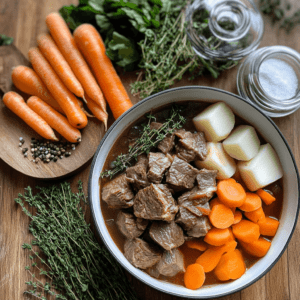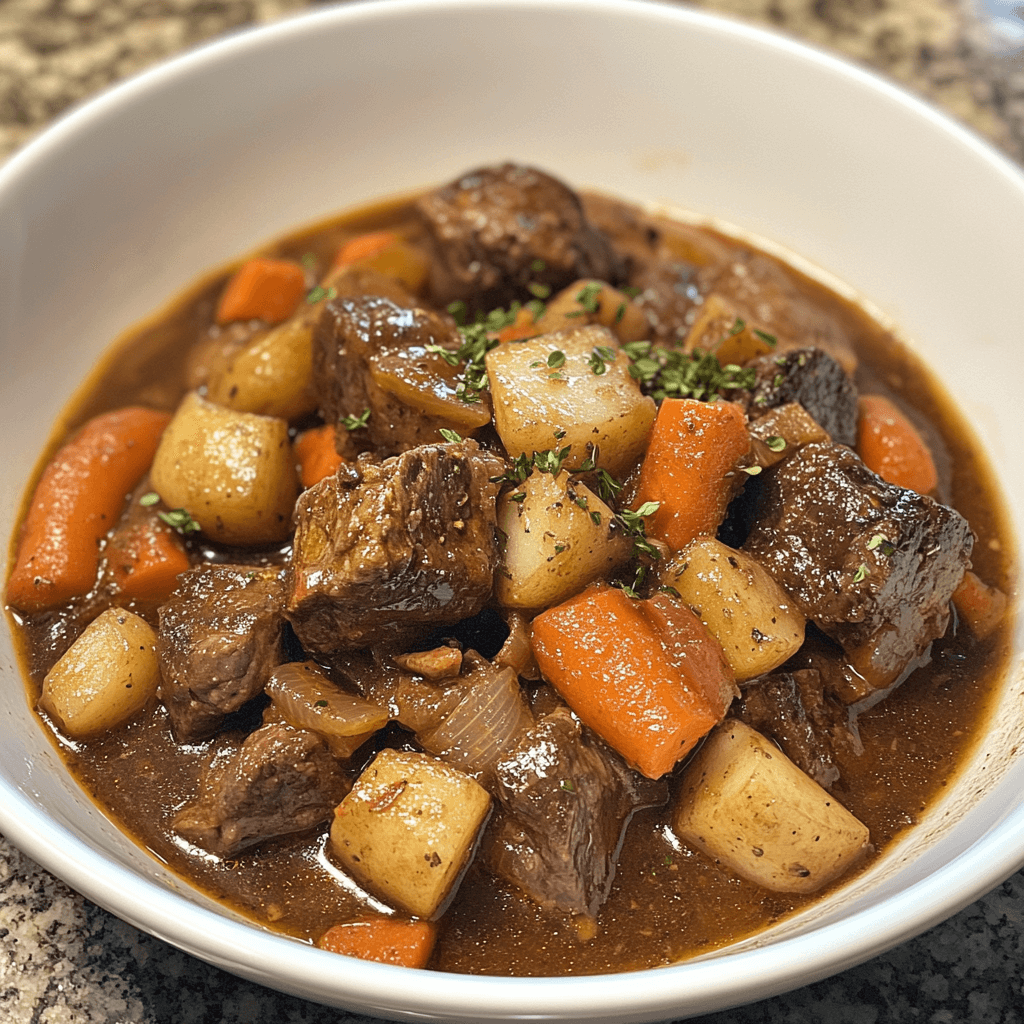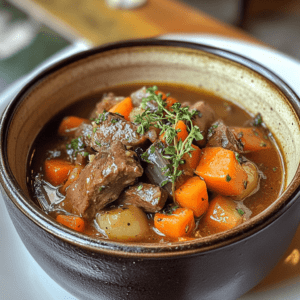Cooking neck meat is an easy way to make tender and flavorful dishes. If you’re curious about how to cook neck meat, this guide will walk you through simple techniques and recipes. With methods like slow cooking, braising, or grilling, you can transform this underrated cut into a culinary delight. Whether you’re preparing beef, pork, or lamb neck, learning how to cook neck meat properly ensures a delicious outcome.
Understanding the Culinary Potential of Neck Cuts
What Makes Neck Cuts Unique?
Neck cuts are a hidden gem in the culinary world. Known for their rich marbling and abundant connective tissue, they deliver a deep, savory flavor that intensifies with slow cooking. Their affordability and versatility make them an excellent choice for those looking to experiment with budget-friendly yet gourmet meals.
Types of Neck Cuts in Culinary Use
Neck cuts vary across animal types:
- Beef neck: Robust flavor and great for slow cooking.
- Pork neck: Slightly sweet and tender, often used in roasts.
- Lamb neck: Rich and gamey, ideal for stews and braises.
- Chicken neck: Perfect for stocks, broths, or stir-fries.
Nutritional Benefits of Neck Meat
Neck meat is a highly nutrient-dense option, offering an excellent source of protein, iron, and collagen. These nutrients are essential for maintaining muscle strength, supporting oxygen transport in the body, and promoting healthy skin and joints.
Slow cooking is particularly beneficial for neck meat, as it enhances its digestibility by breaking down the connective tissues and collagen into gelatin. This process not only improves the texture and flavor but also makes it a healthy choice for individuals seeking to support joint health or increase their intake of essential minerals.
Incorporating neck meat into your meals is a flavorful and nutritious way to enjoy the benefits of this versatile cut.
Choosing the Right Neck Cut for Cooking
Lamb, Beef, Chicken, and Pork Neck – Key Differences
Each neck cut offers unique textures and flavors:
- Beef necks are tough but rewarding when slow-cooked.
- Pork necks caramelize beautifully when roasted.
- Lamb necks are small but pack a punch in stews.
- Chicken necks add depth to soups or can be fried for a crunchy snack.
How to Source Quality Neck Meat
For the best results:
- Shop at local butchers for fresh cuts.
- Look for organic or grass-fed options for higher quality.
- Frozen neck cuts are acceptable but ensure they’re thawed properly.
Preparing Neck Cuts for Cooking
Cleaning and Trimming the Neck
Begin by washing the meat under cold running water to remove any visible debris or bone fragments. Next, use a sharp knife to trim off any excess fat and silver skin. Be careful not to remove too much fat, as it plays a key role in enhancing the meat’s flavor and retaining moisture during cooking.
Proper preparation ensures the neck cuts are clean and ready for cooking while preserving their rich, tender qualities. This step sets the foundation for a delicious and well-balanced dish.
Essential Marinades and Rubs for Flavor
Marinades or dry rubs can elevate your neck cut’s flavor:
- For beef: Use red wine, garlic, and rosemary.
- For pork: Try a mix of soy sauce, honey, and ginger.
- For lamb: Combine yogurt, cumin, and coriander.
Kitchen Tools Needed
- A sharp chef’s knife for trimming.
- Dutch oven or slow cooker for braising.
- Cast iron skillet for searing.
Methods of Cooking a Neck
Slow Cooking for Tender Results
Slow cooking is the go-to method for neck cuts. Place the meat in a slow cooker with vegetables, stock, and herbs, and let it cook for 6–8 hours on low. The result? Fork-tender meat that melts in your mouth.
Braising for Maximum Flavor
Braising involves searing the meat and then simmering it in a flavorful liquid. This method locks in juices while allowing the connective tissues to break down, creating a luscious sauce.
Grilling and Smoking Neck Cuts
Grilling or smoking is an excellent way to add a rich, smoky depth to neck cuts, particularly pork or lamb. These cooking methods enhance the meat’s natural flavors while creating a beautifully charred exterior.
For the best results, start by marinating the neck cuts in a mixture of olive oil, herbs, garlic, and your favorite spices. Allow the meat to soak in the marinade for several hours or overnight to maximize flavor.
When ready to cook, set up your grill or smoker for indirect heat. Place the neck cuts away from the direct flames, allowing them to cook slowly and evenly. This gentle cooking process ensures the meat becomes tender while absorbing the smoky essence.
Grilled or smoked neck cuts pair wonderfully with roasted vegetables, fresh salads, or a side of crusty bread for a hearty and satisfying meal.
Stir-Frying or Sautéing Neck Meat
For quick and flavorful meals, neck cuts can be sliced thin and stir-fried with your choice of fresh vegetables and savory sauces. This method is particularly well-suited for chicken necks, which cook quickly and absorb marinades and seasonings beautifully.
Start by marinating the sliced neck cuts in soy sauce, garlic, and a touch of sesame oil for added flavor. Heat a wok or skillet over high heat, then stir-fry the neck cuts until golden brown. Add vegetables like bell peppers, snap peas, and mushrooms, tossing everything together until the vegetables are tender-crisp.
Finish the dish with a drizzle of your favorite stir-fry sauce and serve over steamed rice or noodles for a quick, delicious, and balanced meal. Chicken necks truly shine in this fast and versatile cooking method!
Recipes for Cooking a Neck

Classic Braised Beef Neck Recipe
Ingredients:
- Beef neck slices
- Onion, carrot, and celery
- Red wine and beef stock
- Thyme and bay leaf
Instructions:
- Sear the beef neck in a hot pan.
- Add chopped vegetables and cook until soft.
- Pour in wine and stock, then simmer for 2–3 hours.
Spicy Grilled Lamb Neck
For a flavorful and tender dish, marinate lamb neck in a mixture of olive oil, minced garlic, chili flakes, and freshly squeezed lemon juice. This marinade enhances the lamb’s natural richness with a zesty, spicy kick and a touch of aromatic depth.
Allow the lamb neck to marinate for at least 2 hours or overnight in the refrigerator for maximum flavor infusion. Preheat your grill to medium heat, then place the lamb neck on the grates. Grill, flipping occasionally, until the meat is cooked through and tender, with a deliciously charred exterior.
Serve the grilled lamb neck with a side of roasted vegetables or a fresh salad for a well-rounded, satisfying meal.
Slow-Cooked Pork Neck with Vegetables
Create a hearty and flavorful meal by layering pork neck with fresh vegetables in a slow cooker. Begin by placing slices of potatoes, carrots, and onions at the bottom of the slow cooker to form a flavorful base.
Layer the pork neck on top of the vegetables, then generously season everything with paprika, salt, and pepper. The paprika adds a warm, smoky note, while the salt and pepper enhance the natural flavors of the ingredients.
Set the slow cooker to low and cook for approximately 6 hours. This slow, gentle cooking process allows the pork neck to become tender and juicy, while the vegetables soak up the savory juices, resulting in a wholesome and comforting dish. Serve as-is or with a side of crusty bread to complete the meal.
Chicken Neck Stir-Fry with Asian Spices
Stir-frying chicken necks is a quick and flavorful way to enjoy this often-overlooked cut. Start by marinating the chicken necks in a mixture of soy sauce, ginger, garlic, and sesame oil to infuse them with savory and aromatic flavors.
In a hot wok or skillet, stir-fry the marinated chicken necks until they are golden and cooked through. Add a colorful array of vegetables, such as bell peppers, broccoli, and carrots, for added texture and nutrition. Toss everything together until the vegetables are tender-crisp and coated in the delicious sauce.
This stir-fried chicken neck dish is a balanced and satisfying meal, perfect for serving over steamed rice or noodles.
Common Mistakes and How to Avoid Them
Overcooking vs. Undercooking Neck Meat
Cooking neck cuts requires careful attention to both time and temperature to achieve the best results. If cooked for too short a time, the meat will remain tough and chewy, failing to reach its full potential. On the other hand, cooking for too long at an inappropriate temperature can cause the meat to dry out, losing its tenderness and juiciness.
For consistently flavorful and tender results, stick to low and slow cooking methods, such as braising or slow roasting. These techniques allow the connective tissues to break down gradually, resulting in a succulent, melt-in-your-mouth texture that highlights the natural richness of the meat.
Using the Wrong Spices or Techniques
When preparing dishes featuring neck bones, it’s essential to match the cooking method to the specific cut of meat to bring out its best qualities. Slow cooking, braising, or roasting are ideal techniques for neck bones, as they allow the meat to become tender while enhancing its natural richness.
Equally important is the thoughtful use of spices and seasonings. Avoid using overpowering spices that could mask the meat’s natural flavor. Instead, opt for complementary herbs and subtle seasonings that enhance the dish without overwhelming its primary ingredient. This approach ensures a well-balanced and flavorful result.
Pairing Neck Dishes with Sides and Drinks
Complementary Sides for Neck Dishes
- When it comes to side dishes that perfectly complement meals featuring neck bones, the options are as versatile as the recipes themselves. Here are a few classic and flavorful choices:
- Mashed Potatoes: Creamy and comforting, mashed potatoes are a timeless side dish that pairs beautifully with braised neck bone dishes. Their smooth texture absorbs the rich flavors of the braising sauce, creating a hearty and satisfying combination.
- Rice or Couscous: For spiced preparations, such as those with bold seasonings or savory broths, rice or couscous provides an ideal base. These grains not only soak up the spices and juices but also add a subtle, complementary texture to the dish.
- Grilled Vegetables: If you’re looking for a lighter pairing, grilled vegetables are a fantastic choice. Their natural sweetness and smoky flavor balance the richness of the neck bones, offering a fresh and healthy contrast.
Whether you’re crafting a comforting stew, a spiced entrée, or a lighter meal, these side dishes enhance the flavors and textures of your neck bone recipes, elevating the dining experience.
Wine and Beverage Pairings
- Choosing the right beverage pairing can enhance the flavors of dishes featuring neck bones, creating a more enjoyable dining experience. Here are some ideal pairings to consider:
- Red Wine: Bold and full-bodied red wines, such as Cabernet Sauvignon or Syrah, pair exceptionally well with beef or lamb neck dishes. Their rich flavors complement the hearty, savory nature of the meat, making them a classic choice for braised or slow-cooked recipes.
- White Wine: For pork neck dishes, a crisp, slightly acidic white wine like Sauvignon Blanc or Chardonnay is an excellent match. The lighter profile of white wine balances the natural sweetness and tenderness of pork, providing a refreshing contrast.
- Craft Beers: Grilled neck bones, with their smoky and charred flavors, pair beautifully with craft beers. Robust ales, stouts, or IPAs bring bold and complex notes that elevate the smoky richness of the meat.
These beverage options not only complement the unique characteristics of each dish but also add depth to the overall meal, making them perfect for entertaining or enjoying a special dinner at home.
Frequently Asked Questions About Cooking Necks
- Why Is Neck Meat Affordable?
Neck meat is cost-effective due to its less mainstream appeal, but it’s a hidden treasure for flavorful meals. - How Long Does It Take to Cook Neck Meat?
Braising takes 2–3 hours, while grilling or stir-frying takes much less time. - Can You Freeze Neck Meat Before Cooking?
Yes, ensure it’s stored in an airtight container to maintain quality. - Is Neck Meat Tough or Tender?
Initially tough, neck meat becomes incredibly tender with slow cooking. - What’s the Best Way to Season Neck Meat?
Use herbs and spices that complement the meat’s natural flavor, like rosemary for beef or coriander for lamb. - Can You Use Neck Meat for Soups and Broths?
Absolutely! Neck meat adds a rich depth of flavor to broths and stocks.
Conclusion
Cooking neck meat might seem unconventional at first, but with the right methods and tips, it can become a centerpiece of hearty, flavorful meals. Whether you choose to slow-cook, braise, grill, or sauté, understanding how to cook neck meat unlocks its full potential. This underrated cut offers incredible value, rich flavors, and versatility for a variety of dishes.
By following the techniques and recipes shared here, you can confidently prepare tender, delicious neck meat dishes that your family and friends will love. Embrace this hidden gem and elevate your cooking repertoire with ease!
Related Article:


